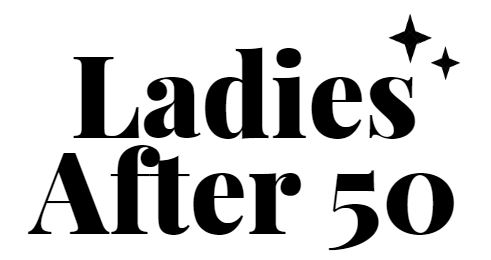Varicose veins are a common condition that affects many women, particularly those over the age of 50. Not only can varicose veins cause you pain and discomfort, but their appearance may also make you feel self-conscious.
In this comprehensive guide, we will explore the causes and symptoms you may experience with varicose veins, and five options for treatment.
Causes of Varicose Veins
There are several factors that may cause the development of varicose veins. In women over 50, hormonal changes associated with menopause can contribute to the weakening of your vein walls and valves. Your body produces less estrogen which can reduce the elasticity of your blood vessels, leading to their dilation and the formation of varicose veins.
Other causes that increase the likelihood of varicose veins in women over 50 include:
- Family history: Your genetic predisposition plays a significant role, as varicose veins tend to run in families.
- Sedentary lifestyle: Lack of physical activity and prolonged periods of sitting or standing can contribute to the development of varicose veins.
- Obesity: Excess weight puts additional pressure on your veins, leading to their enlargement.
- Pregnancy: During pregnancy, your body undergoes an increase in blood volume and hormonal fluctuations. These changes can put added pressure on your veins, leading to the development or worsening of varicose veins. Furthermore, hormonal changes combined with the pressure from the uterus can weaken the veins.

Symptoms
Varicose veins can have various effects on women over 50. Besides their visible appearance, which can make you feel self-conscious and affect your confidence, they often cause uncomfortable symptoms. Common signs include:
- Bulging or twisted veins: These may be visible on the surface of your legs.
- Swollen ankles and feet: Your affected legs and ankles may become swollen due to poor blood circulation.
- Leg pain and fatigue: You may experience aching, heaviness, or cramping in your legs, particularly after prolonged periods of standing or sitting.
- Restless legs syndrome: A condition that causes an irresistible urge to move the legs, usually because of an uncomfortable crawling or creeping sensation.
- Itching and tingling: Varicose veins can cause itching, tingling, and a general feeling of discomfort, often aggravated by warm weather.
In some cases, varicose veins may lead to more severe complications, such as:
- Skin changes: The skin around your affected veins can become discolored, dry, and itchy. Over time, it may become thin and prone to ulcers.
- Blood clots: Although rare, varicose veins can increase your risk of blood clots, known as deep vein thrombosis (DVT). This condition occurs when a blood clot forms in a deep vein in your body, usually in the legs. This can be potentially dangerous if a clot travels to the lungs, causing a pulmonary embolism, where the clot blocks the flow of blood.
5 Options For Treatment
When it comes to treatment options for varicose veins, you have several approaches available:
1. Lifestyle Modifications:
- Regular exercise to improve circulation and strengthen your leg muscles
- Maintaining a healthy weight to reduce pressure on your veins
- Avoiding prolonged periods of standing or sitting
- Elevating or bending your legs to help with blood circulation and reduce swelling
2. Compression Stockings:
- Wearing compression stockings to improve blood flow and alleviate symptoms.

3. Sclerotherapy:
Sclerotherapy is a medical procedure commonly used to treat varicose veins and spider veins. It involves the injection of a special solution, known as a sclerosant, into your affected veins. The sclerosant causes the walls of your veins to become irritated and stick together, eventually leading to the closure of the veins. Blood flow is then redirected to your healthier veins, improving overall circulation.
Sclerotherapy is generally considered a safe and effective treatment for varicose veins and spider veins. However, like any medical procedure, it carries some risks, such as allergic reactions, skin discoloration, or the formation of small blood clots. Consult your doctor to discuss the potential benefits and risks of sclerotherapy.
4. Endovenous Laser Treatment (EVLT) or Radiofrequency Ablation (RFA):
Endovenous Laser Treatment (EVLT) and Radiofrequency Ablation (RFA) are minimally invasive procedures used to treat varicose veins. Endovenous Laser Treatment is a procedure that uses laser energy to treat varicose veins. Radiofrequency Ablation involves the application of radio frequency energy to close off the affected vein.
Both techniques aim to close off your affected veins, redirecting blood flow to healthier veins and improving overall circulation. They offer alternatives to traditional surgical procedures such as vein stripping.
Both EVLT and RFA are performed on an outpatient basis, typically taking less than an hour to complete. They offer several advantages over traditional surgery, such as faster recovery times, minimal scarring, and reduced risk of complications. However, it’s important to consult your doctor to determine the most suitable treatment option based on your individual needs and conditions.

5. Vein Stripping and Ligation:
Vein stripping and ligation is a surgical procedure used to treat varicose veins, particularly when they are severe or extensive. It involves the removal or tying off of your affected veins to redirect blood flow to healthier veins and alleviate symptoms.
While vein stripping and ligation can effectively treat varicose veins in women over 50, they are considered more invasive compared to minimally invasive procedures such as endovenous laser treatment or radiofrequency ablation. Therefore, they are generally reserved for cases where less invasive treatments have not been successful or when your varicose veins are particularly severe.
Varicose veins can be a significant concern for women over 50, impacting both your physical well-being and self-confidence. By understanding the symptoms and treatment options of varicose veins, you can take proactive steps to manage this condition and improve your overall quality of life. Consultation with a healthcare professional is recommended for personalized guidance and treatment.

